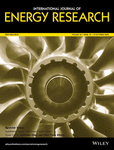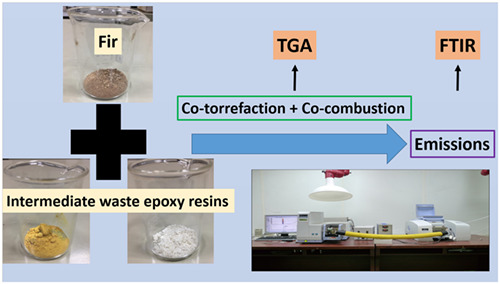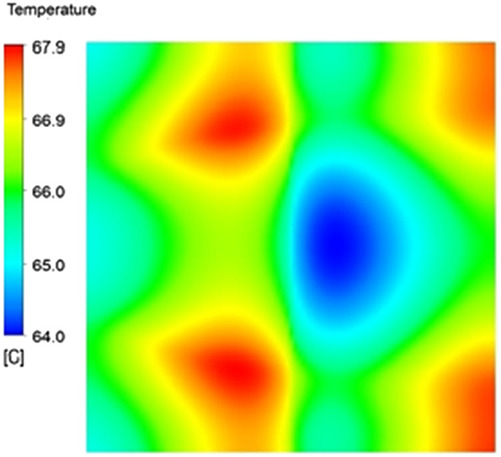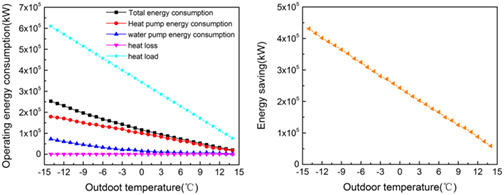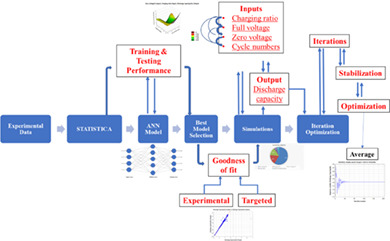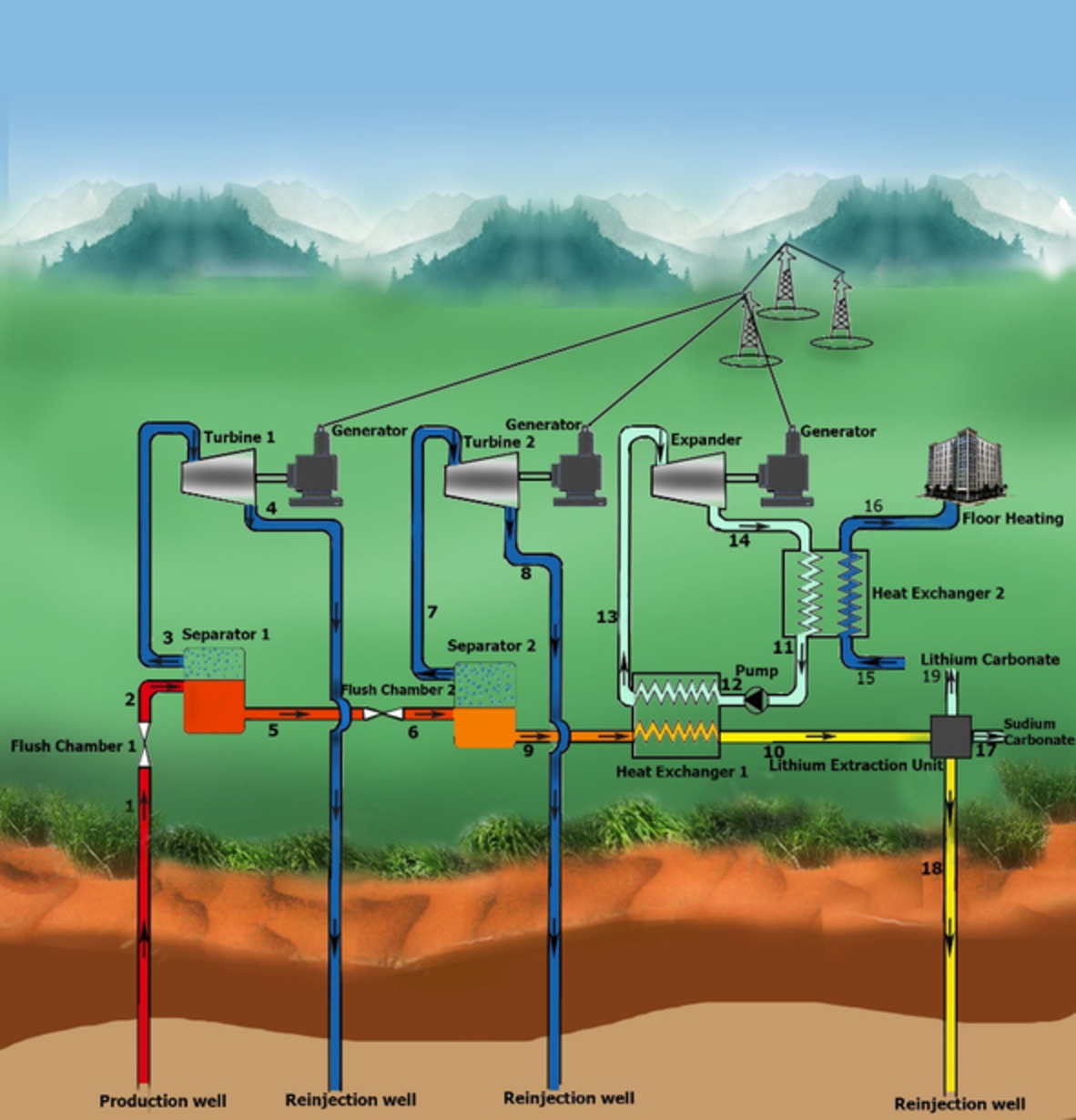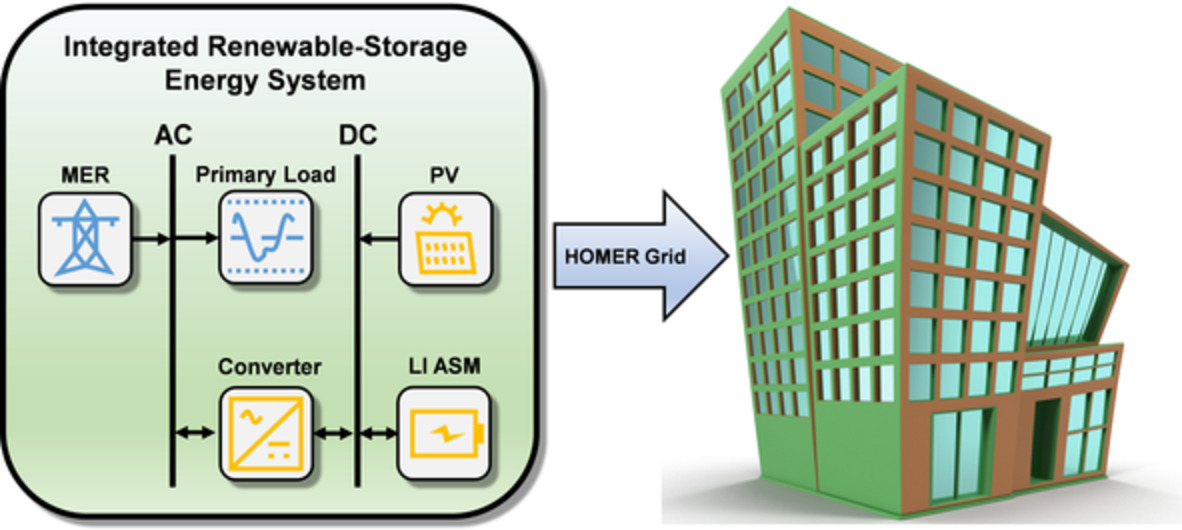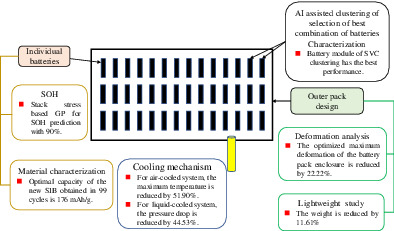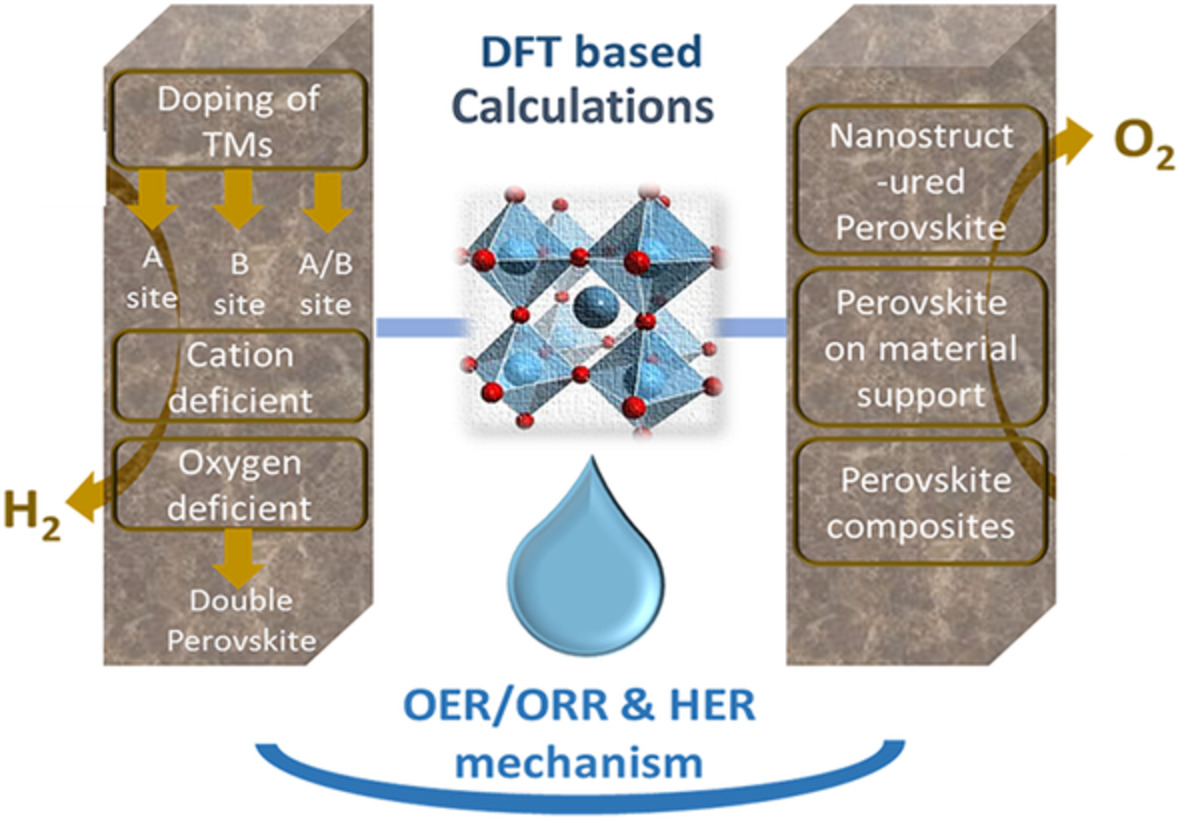Journal list menu
Export Citations
Download PDFs
Issue Information
- Pages: 9241-9243
- First Published: 17 September 2020
Editorial for the special issue on Sustainable Energy and Green Technologies (SEGT 2018)
- Pages: 9244-9245
- First Published: 20 July 2020
Hydrogen energy related research and development efforts in Canada: A perspective
- Pages: 9246-9253
- First Published: 28 August 2020
Microalgae-microbial fuel cell (mMFC): an integrated process for electricity generation, wastewater treatment, CO2 sequestration and biomass production
- Pages: 9254-9265
- First Published: 19 May 2020
Sustainability of the four generations of biofuels – A review
- Pages: 9266-9282
- First Published: 15 June 2020
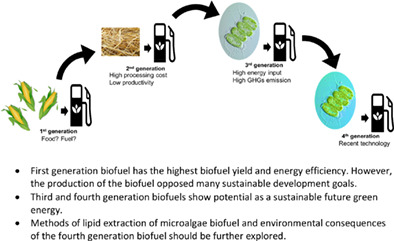
• First generation biofuel has the highest biofuel yield and energy efficiency. However, the production of the biofuel opposed many sustainable development goals.
• Third and fourth generation biofuels show potential as a sustainable future green energy.
• Methods of lipid extraction of microalgae biofuel and environmental consequences of the fourth generation biofuel should be further explored.
A review on development of offshore wind energy conversion system
- Pages: 9283-9297
- First Published: 17 September 2020
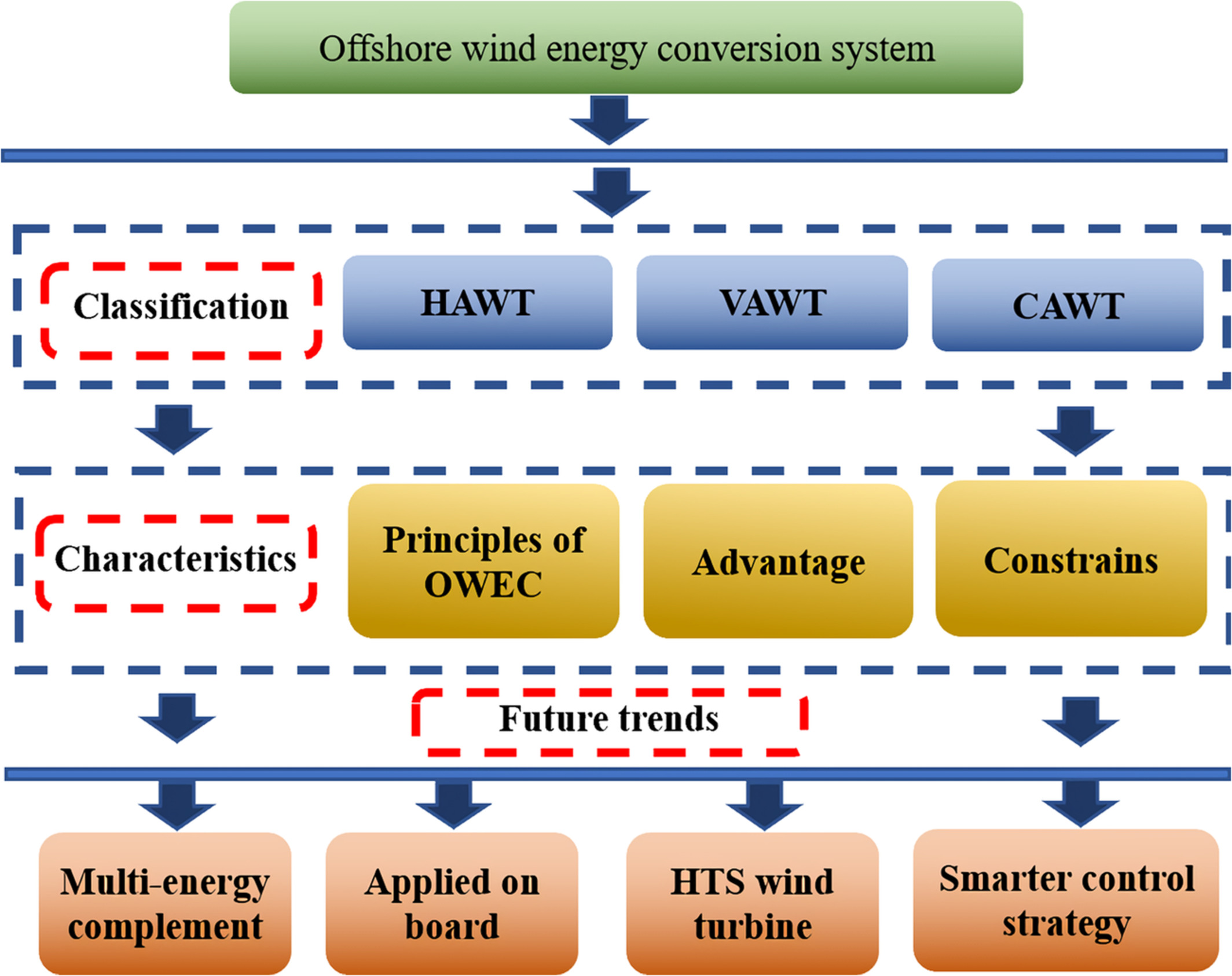
Offshore wind energy conversion (OWEC) has attracted intensive attentions due to its significant advantages in sufficient wind energy, high power output and low land occupancy rate. This article firstly introduces the state-of-the-art of the development status of the offshore wind energy technology worldwide, and then comprehensively analyzes the advantages and constraints of the OWEC technology. Finally, the future development trend of the offshore wind energy is envisioned.
Performance evaluation and comparison of multistage indirect evaporative cooling systems in two operation modes
- Pages: 9298-9308
- First Published: 16 August 2019
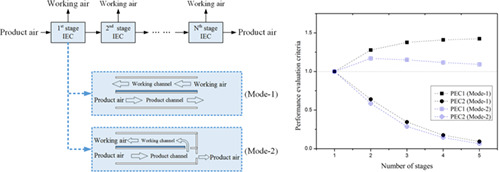
This study aims to establish a performance evaluation method to advance the appropriate design for multistage indirect evaporative cooling systems. Theoretical analysis has been carried out by using a validated mathematical model. The values of performance evaluation criteria were calculated to study the combined influence on the cooling effectiveness, the pressure drop, and the cooling capacity.
Performance investigation of a small Savonius-Darrius counter-rotating vertical-axis wind turbine
- Pages: 9309-9316
- First Published: 09 September 2019
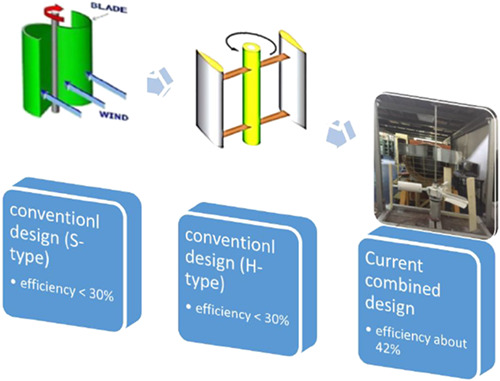
- The effectiveness of combining S type and H type on a counter-rotating VAWT has been studied.
- The new combined design was able to enhance the performance of the system significantly and was able to operate in a low-speed wind condition.
- An average power coefficient and torque coefficient of up to 30% and 42% were, respectively, achieved using this technique.
Co-torrefaction followed by co-combustion of intermediate waste epoxy resins and woody biomass in the form of mini-pellet
- Pages: 9317-9332
- First Published: 10 January 2020
Investigation of functionally graded metal foam thermal management system for solar cell
- Pages: 9333-9349
- First Published: 22 October 2019
Optimal integration of a biomass-based polygeneration system in an iron production plant for negative carbon emissions
- Pages: 9350-9366
- First Published: 22 October 2019
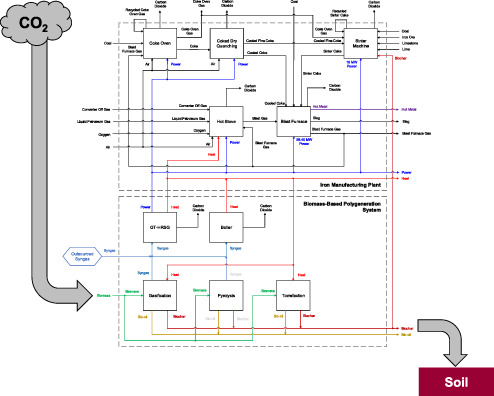
The integration of BBPS in the iron manufacturing enabled a negative carbon emission. An 80% reduction of carbon footprint upper threshold target allowed an improvement of the negative carbon footprint by 34.15% while enhancement on the annualized capital cost of 1.81% was achieved. The influence in the change in biomass price is relatively significant compared with the change in the iron ore and coal prices.
Screening of novel water/ionic liquid working fluids for absorption thermal energy storage in cooling systems
- Pages: 9367-9381
- First Published: 29 October 2019
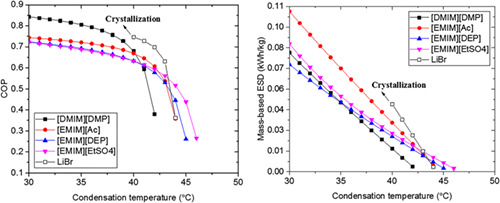
All the existing H2O/IL working fluids are studied for absorption cooling cycles; this study aims to screen the suitable H2O/IL working fluids for ATES. The major merit of using H2O/ILs as novel ATES working fluids is that the solutions can be charged to be more concentrated while staying away from crystallization risk. In this manner, the ATES has higher reliability without crystallization and higher ESDs with enlarged concentration differences.
A parametric study of laminar convective heat transfer in fractal minichannels with hexagonal fins
- Pages: 9382-9398
- First Published: 11 November 2019

• Fractal structure of hexagonal fins is imposed to a minichannel for enhancing heat transfer with a moderate pressure penalty.
• Laminar convection is enhanced by diffluence and confluence flows in the fractal channel due to strong flow mixing and thermal boundary layer redevelopment.
• Heat transfer enhanced by hexagonal fins outweighs its pressure penalty.
• The optimum branching angle and the relative hexagonal side length can be evaluated by the performance factor.
Evaluation and optimization of water source heat pump for district heating: A case study in steel plant
- Pages: 9399-9413
- First Published: 06 November 2019
Multi-objective optimization of lithium-ion battery pack casing for electric vehicles: Key role of materials design and their influence
- Pages: 9414-9437
- First Published: 01 November 2019
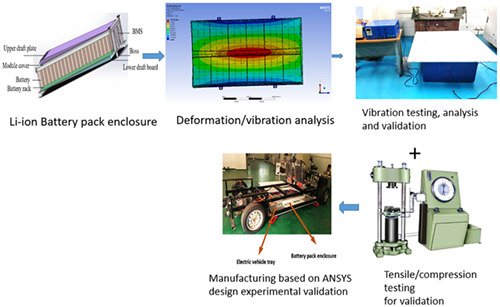
By 2025, the demand of lithium for chargeable and nonchargeable batteries is expected to reach 212 000. Therefore, the safety of an electric vehicle largely depends on the mechanical characteristics of its battery pack. In addition, a lighter weight electric vehicle has longer driving range, which makes it much more popular in vehicle market. In this paper, a comprehensive procedure based on finite element analysis is applied to compare the maximum equivalent stress, total deformation, and resonance frequency on a battery pack casing with different materials under parking, bumpy road, sharp turns, and sudden braking conditions to obtain the best material. Although aluminum 6061 is tested to have lower maximum equivalent stress, carbon nanotubes (CNT) is proved to be the best material considering all of these three performance standards. Then, response surface optimization design method is adopted to get an optimal design of the battery pack casing. Optimization results concluded that the maximum equivalent stress can be reduced from 3.9243 to 3.2363 MPa, and the six-order resonance frequency can be increased from 722.65 to 1040.751 Hz.
An innovative, high-efficiency silver/silica nanocomposites for direct absorption concentrating solar thermal power
- Pages: 9438-9453
- First Published: 11 January 2020
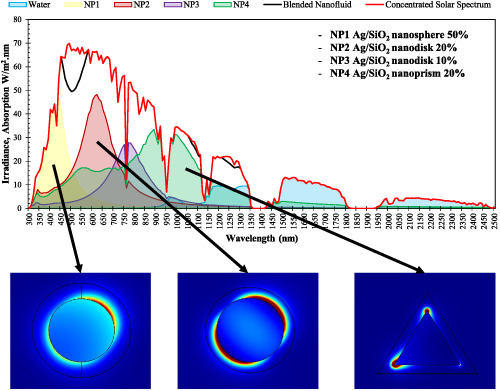
- Blended nanomorphologies of Ag/SiO2 for concentrating volumetric solar energy.
- Silica shell is transparent to the visible and near-infrared radiation bands.
- Silica shell consolidates the intensity of the LSPR and the absorption characteristics.
- A stable, high absorption efficiency low concentration nanofluid has been suggested.
- The DASC efficiency can reach 75% for a solar concentration ratio of 50.
Synthesis and characterization of monk fruit seed (Siraitia grosvenorii)-based heterogeneous acid catalyst for biodiesel production through esterification process
- Pages: 9454-9465
- First Published: 01 January 2020
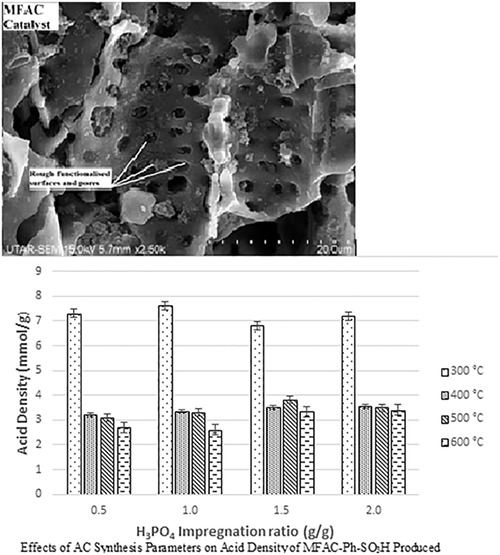
Monk fruit seed was synthesized into heterogeneous acid catalyst for biodiesel production using 2-steps surface functionalization with phenylation and sulfonation method. Effects of synthesis and reaction parameters for esterification were investigated and biodiesel yield up to 98.5% was successfully obtained. In addition, the characterizations done on the as-synthesized catalysts proved that the synthesis process successfully modified the catalyst's structure. The catalyst was also highly robust which could maintain 84.4% biodiesel yield up to 4 successive cycles.
A comprehensive study on thermal conductivity of the lithium-ion battery
- Pages: 9466-9478
- First Published: 03 February 2020
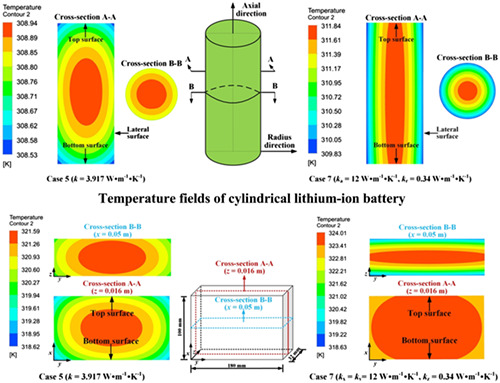
Isotropic and anisotropic thermal conductivities of the four lithium-ion batteries with different positive electrodes are reviewed. The maximum temperature and temperature difference of the battery employing isotropic and anisotropic thermal conductivities are approximately the same. Obvious differences are observed in temperature distributions of the battery employing isotropic and anisotropic thermal conductivities. Thermal conductivity bounds of lithium-ion batteries are established to check the reliability of the thermal conductivity data used in battery thermal models.
A new packed-sphere model for geological materials thermal conductivity prediction at moderate porosity range for geothermal utilization
- Pages: 9479-9493
- First Published: 25 December 2019
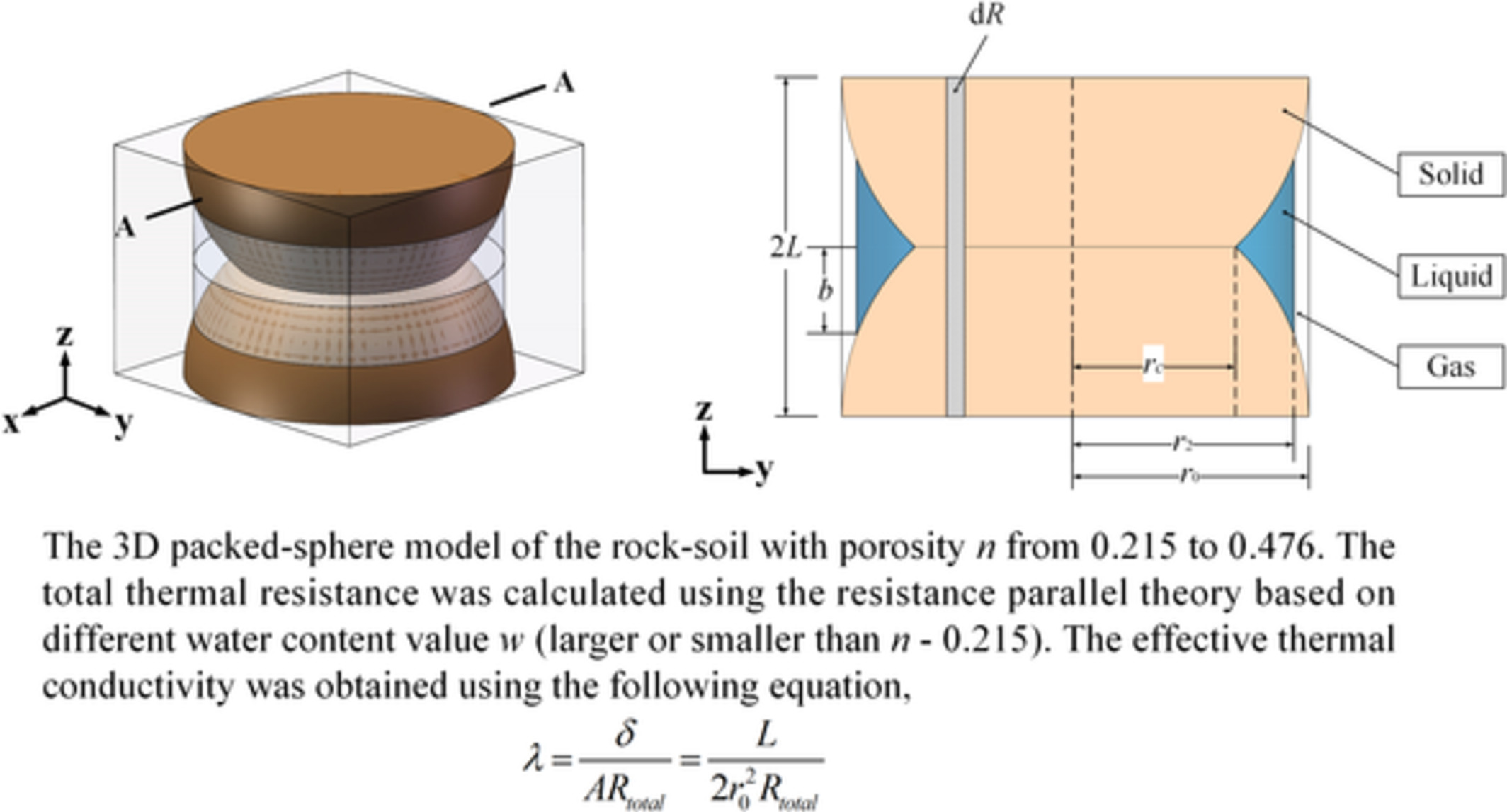
• Three-dimensional packed-sphere model for rock-soil thermal conductivity prediction.
• The parallel thermal resistance method was applied to solve the model.
• Prediction results validation with the measurement values of three groups of rock-soil.
• Application range and prediction accuracy analysis.
Effects of wave number and average radius on flow and heat transfer in a curve-wave channel
- Pages: 9494-9512
- First Published: 15 December 2019

A macroscale curved channel with periodical wave structure is proposed for enhancing heat transfer rate with a moderate pressure drop. The mechanism of the heat transfer enhancement is analyzed based on the local surface Nusselt number and the secondary flow. The heat transfer enhancement can be mainly attributed to the periodical thermal entrance effect along the flow direction.
Illustration of experimental, machine learning, and characterization methods for study of performance of Li-ion batteries
- Pages: 9513-9526
- First Published: 03 February 2020
Heat transfer enhancement in light-emitting diode packaging employing different molar concentration of magnesium oxide thin films as a heat spreader
- Pages: 9527-9537
- First Published: 30 January 2020
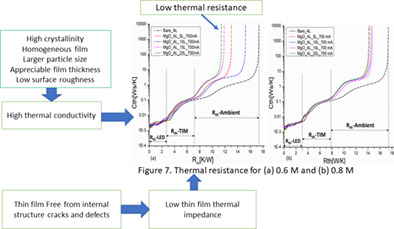
- This article suggests an alternative heat spreading material for effective thermal management in light-emitting diode packaging system.
- In this study, magnesium oxide thin films were deposited on aluminum substrate and used as heat spreader in-between light-emitting diode and heat sink. High thermal conductivity was recorded from the magnesium oxide thin film, low thermal resistance, low thermal impedance, and high illumination that were obtained from the light-emitting diode mounted on the magnesium oxide thin films.
Low thermal impedance and low thermal resistance for effective heat spreading: appreciable film thickness and high thermal conductivity from magnesium oxide thin film prove the thin film as an alternative heat spreading material in light-emitting diode packaging system towards improvement of thermal path for excessive heat removal from the package to the ambient.
Pilot study on building-integrated PV: Technical assessment and economic analysis
- Pages: 9538-9559
- First Published: 03 March 2020
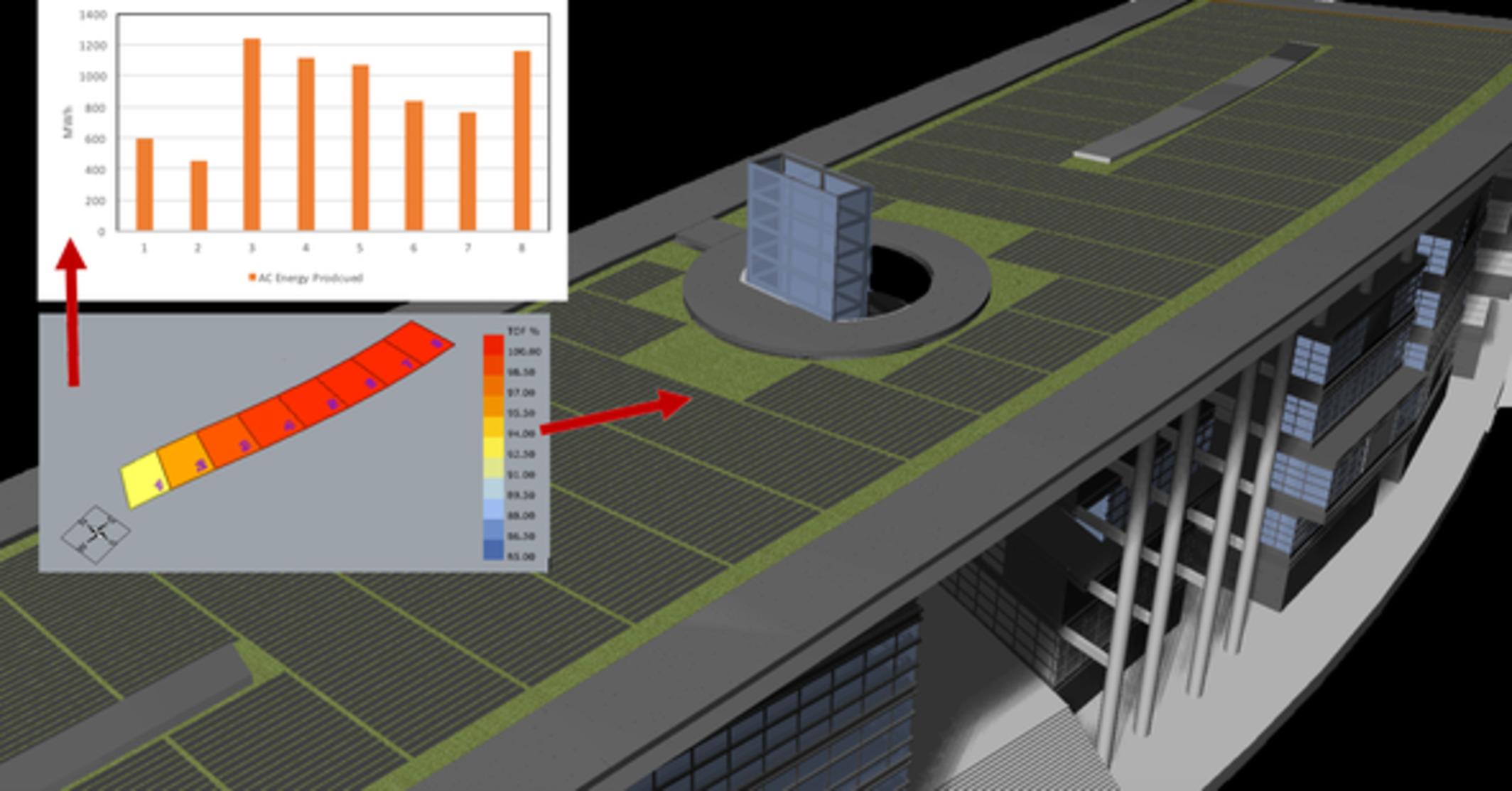
This is a pilot study of building-integrated photovoltaics at Heriot-Watt University Malaysia, which proposes an optimized configuration covering both technical and economic assessments. The novel methodology approach involves 3D modelling of the building geometry, which provides a variety of interactive graphics for decision-making. The modelling focuses on tilt and orientation factor (TOF) for unconventional subject surfaces, which is the curved roofs. The work adopts realistic weather data that provides reliable energy yield estimation, losses, performance ratio, and payback time.
Sustainable electricity generation fuel mix analysis using an integration of multicriteria decision-making and system dynamic approach
- Pages: 9560-9585
- First Published: 12 February 2020
Analysis and assessment of a geothermal based cogeneration system and lithium extraction
- Pages: 9586-9597
- First Published: 25 March 2020
Application of artificial intelligence to maximize methane production from waste paper
- Pages: 9598-9608
- First Published: 23 April 2020
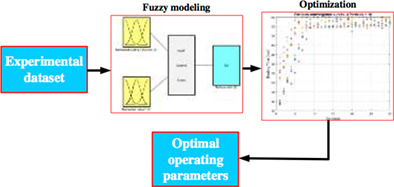
- A robust Adaptive Network-based Fuzzy Inference System (ANFIS) model for methane production from waste paper was built using fuzzy logic modelling based on the experimental datasets.
- A particle swarm optimizer (PSO) was used to maximize methane production through optimizing beating time and feedstock/inoculum ratio.
- The fuzzy model shows a better fitting to the experimental data compared to ANOVA. The proposed strategy, i.e., modelling and optimization, is an effective for increasing the biomethane yield at extended range conditions.
Numerical and experimental study of transient conjugate heat transfer in helical closed-loop geothermal heat exchangers for application of thermal energy storage in backfilled mine stopes
- Pages: 9609-9616
- First Published: 27 April 2020
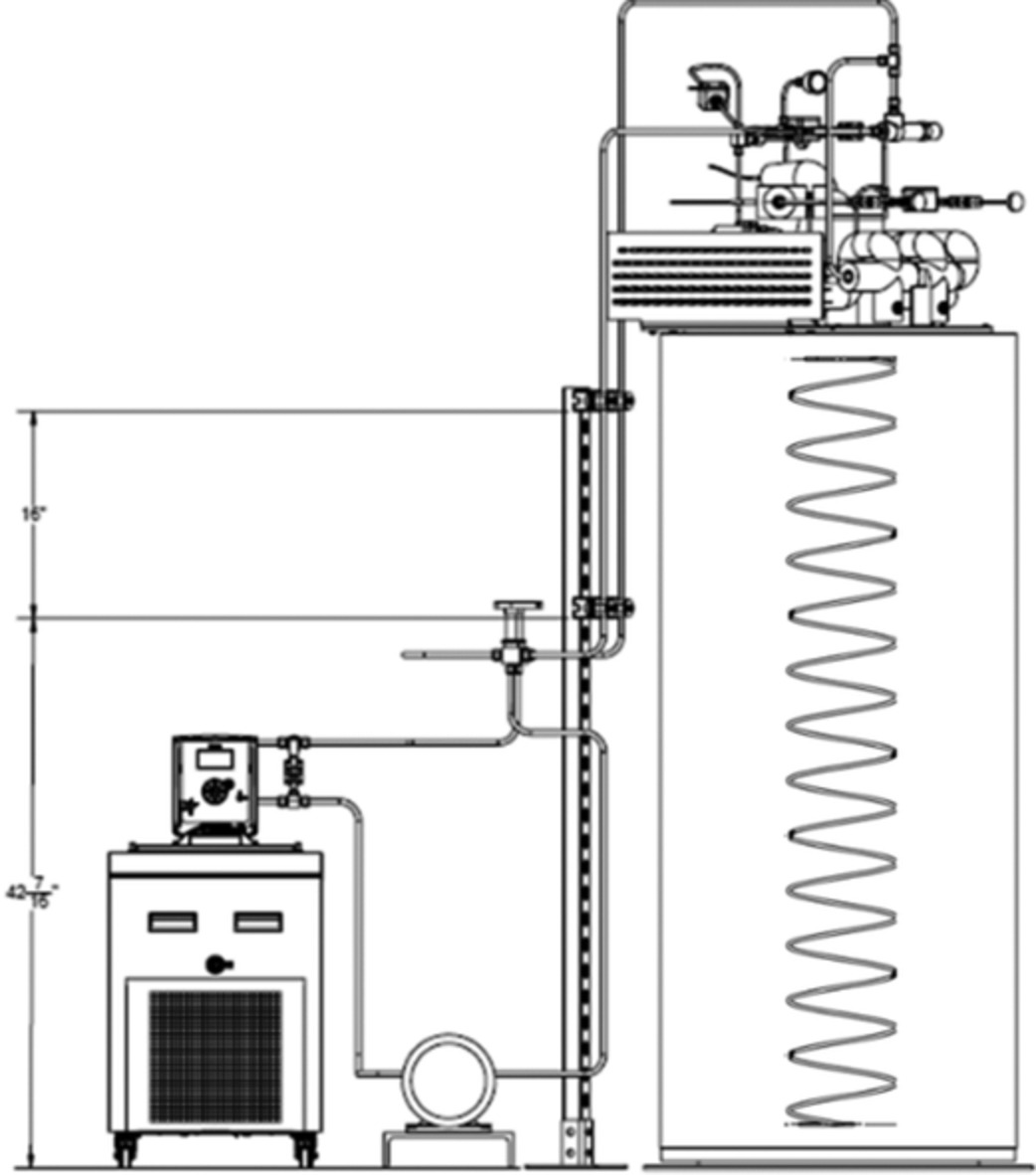
This article investigates the heat transfer through a novel type of heat exchanger in an industry that is extremely energy intensive. The investigations were carried out on a state-of-the-art experimental rig, and coupled with an original conjugate heat transfer numerical model. Furthermore, the numerical model was extended to a full-size SCHE, in the first study of its kind.
Unraveling hydrogen production potential by glucose and xylose co-fermentation of Thermoanaerobacterium thermosaccharolyticum W16 and its metabolisms through transcriptomic sequencing
- Pages: 9617-9628
- First Published: 28 April 2020
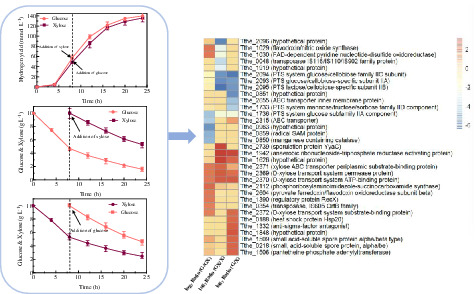
This study demonstrates that Thermoanaerobacterium thermosaccharolyticum W16 could perform high glucose and xylose fermentation for hydrogen production. Further investigation confirmed that strain W16 could consume glucose and xylose simultaneously with the absence of carbon catabolite repression, however, the glucose or xylose consumption rate would be slowed down with the addition of counterpart. Transcriptomic sequencing analysis suggested the activity of different sugar transporters was the main reason for the similar yet interactive characteristic of glucose and xylose catabolism by strain W16.
Eco-green portable wireless power charger design with low-voltage, high-current fuel cell power source features
- Pages: 9629-9645
- First Published: 07 May 2020
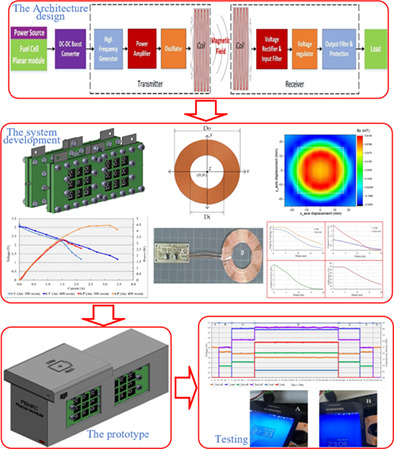
This article presents innovative eco-green portable wireless power charger system for portable electronic devices which offers more environment-friendly, enhanced consumer convenience and experience. It applied a wireless power transmission system using magnetic induction technique and a four-cell proton exchange membrane fuel cell planar module with free air-breathing cathode as a clean power source. With low-voltage and high-current fuel cell features, the apparatus provides power around 1.6 W to the device battery under recharging.
Optimal design of an integrated renewable-storage energy system in a mixed-use building
- Pages: 9646-9658
- First Published: 23 April 2020
Machine learning-based energy consumption clustering and forecasting for mixed-use buildings
- Pages: 9659-9673
- First Published: 18 May 2020

A machine learning-based energy consumption forecasting model has been proposed to predict the energy usage of 30 mixed-used buildings. Differences in the energy usage of the mixed-used buildings were captured in the developed forecasting model. The results further revealed a 46% decrease in the mean bias error and a 10% decrease in the coefficient of variation root mean square error for the mixed-used buildings.
Development and evaluation of an integrated solid oxide fuel cell system for medium airplanes
- Pages: 9674-9685
- First Published: 06 July 2020
Intelligent optimization methodology of battery pack for electric vehicles: A multidisciplinary perspective
- Pages: 9686-9706
- First Published: 14 July 2020
Effects of assembling method and force on the performance of proton-exchange membrane fuel cells with metal foam flow field
- Pages: 9707-9713
- First Published: 25 June 2020
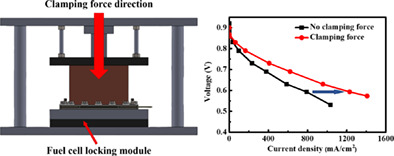
- An assembling device capable of applying uniform clamping force is built to facilitate fuel cell assembling and maintain the flow field uniformity.
- With the optimum clamping force of 200 kgf, the cell performance is enhanced by 50%, due to reduced mass transfer resistance and interface resistance provided by the resultant uniform compression pressure distribution.
Role of perovskites as a bi-functional catalyst for electrochemical water splitting: A review
- Pages: 9714-9747
- First Published: 09 July 2020
Green synthesis of porous Ni-silicate catalyst for hydrogen generation via ammonia decomposition
- Pages: 9748-9756
- First Published: 23 July 2020
Conceptual design of a hybrid thin layer cascade photobioreactor for microalgal biodiesel synthesis
- Pages: 9757-9771
- First Published: 23 July 2020
Ranking sustainable areas for the development of tidal power plants: A case study in the northern coastline of Brazil
- Pages: 9772-9786
- First Published: 27 July 2020
Modeling mass loss of biomass by NIR-spectrometry during the torrefaction process
- Pages: 9787-9797
- First Published: 19 August 2020




